Understanding When In-Home Care Is Needed
As our loved ones age, distinguishing between normal aging and early signs of health or safety issues can be challenging yet crucial. Recognizing these indicators early ensures timely intervention and enhances their quality of life. This article highlights the top signs that suggest your elderly loved one may need in-home care, emphasizing behavioral, physical, environmental, and health-related cues.
Behavioral and Cognitive Changes Signaling the Need for Support
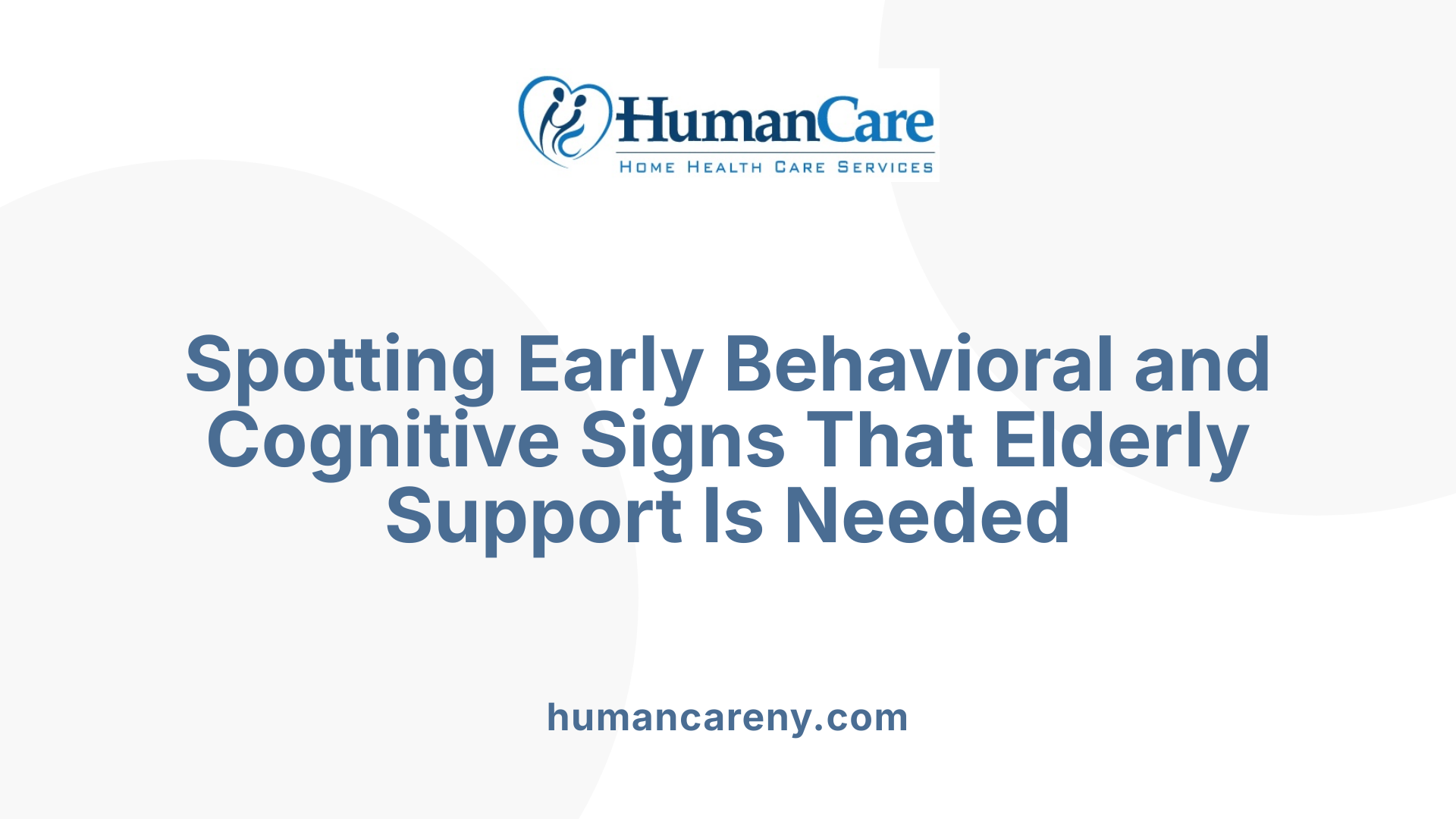
What symptoms or behaviors suggest an elderly person needs additional support at home?
Recognizing when an elderly loved one requires extra help can significantly impact their safety and well-being. Changes in memory, confusion, or behavior are often early indicators. For instance, forgetfulness that interferes with daily routines—such as missing appointments, losing items regularly, or forgetting medications—are common signs of cognitive decline.
Confusion or disorientation, like becoming unsure of the time, place, or familiar routines, can signal serious issues like dementia or other neurological conditions. They may also repeat questions, get lost in familiar environments, or exhibit difficulty recognizing loved ones.
Behavioral shifts, including increased irritability, anxiety, withdrawal from social interactions, or sudden mood swings, can be signs of underlying mental health conditions. Some may also display agitation, paranoia, or hallucinations.
Social withdrawal and decreased participation in activities they once enjoyed can indicate feelings of loneliness, depression, or advancing cognitive decline. An unkempt environment with clutter, unopened mail, or missed medical care adds to concerns.
Physical signs such as frequent falls, difficulty walking, or needing assistive devices may reflect mobility issues or balance problems, requiring professional oversight.
Other signs include poor personal hygiene, significant weight changes, or neglect of household chores, which may result from physical or emotional health issues.
When these behaviors are observed, it is crucial to consider these signs as indicators of the need for additional support, whether through in-home care, medical management, or more comprehensive residential options.
Understanding and responding early to these symptoms can help maintain dignity and safety for the elderly while easing caregiver burden.
More detailed information on recognizing when an elder needs in-home support or identifying signs of cognitive decline can be found by searching using the terms "signs elder need in-home support or elderly cognitive decline."
Physical Signs Indicative of Declining Health and Mobility
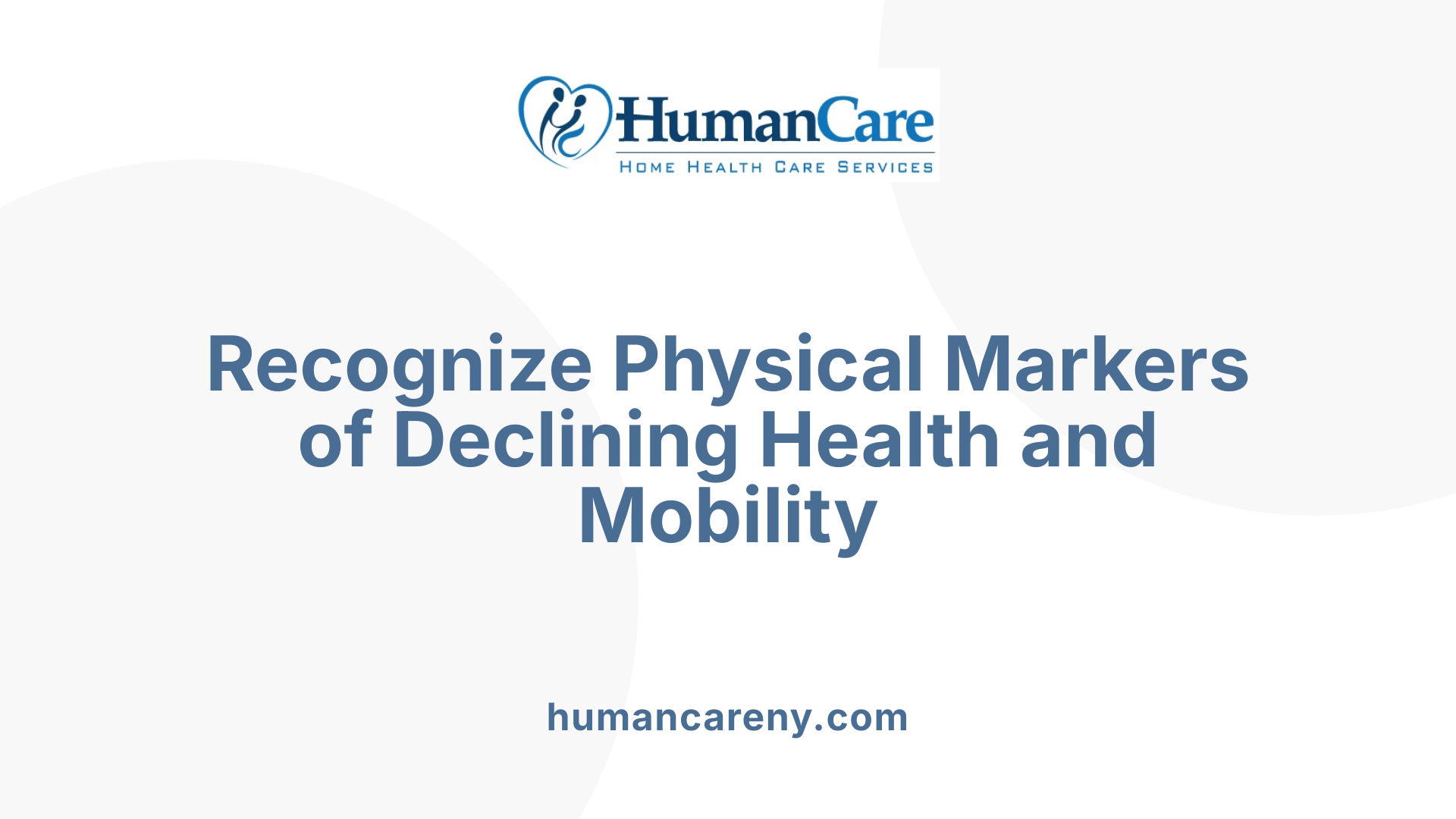
What are the key signs that indicate an elderly loved one may need in-home care?
Monitoring physical health and mobility is essential to determine if an elderly loved one requires additional support at home. One of the primary indicators is noticeable physical frailty, such as difficulty walking, unsteady gait, or decreased strength, which increases the risk of falls and injuries.
Falls are particularly telling. An increase in episodes of falling, trips, or stumbling points to mobility challenges that could be mitigated with home safety modifications or supervision. Signs like trouble climbing stairs, holding onto furniture for balance, or hesitation while walking are also important.
Changes in personal appearance—such as unexplained bruises, cuts, burns, or weight loss—may reflect underlying health issues or even neglect or abuse. Bruises especially require attention as they can signify recent falls or physical abuse.
Physical frailty manifests through slow movements, reduced stamina, and prolonged sitting or resting, indicating declining physical health. Persistent pain when standing or moving can also be a sign that medical issues need addressing.
Environmental factors like cluttered living spaces, accumulated dirt, or strong odors suggest neglect or inability to maintain household routines, which can compromise safety.
Unmanaged health conditions might result in frequent hospital visits or complications, further highlighting the need for in-home monitoring and care.
All these signs—when observed collectively—underline the importance of a professional assessment to ensure safety and appropriate care measures are implemented for the elderly individual.
| Sign or Symptom | What It Indicates | Suggested Action |
|---|---|---|
| Mobility issues | Difficulty walking, unsteady gait | Safety modifications, mobility aids, in-home assistance |
| Falls or trips | Balance problems, weakness | Home safety evaluation, physical therapy |
| Physical frailty | Slow movement, exhaustion | Medical checkup, support services |
| Injuries or bruises | Potential abuse or neglect, falls | Investigation, protective intervention |
| Changes in appearance | Weight fluctuations, poor hygiene | Medical evaluation, in-home support |
| Environmental neglect | Clutter, odors | Assistance with cleaning, household maintenance |
Recognizing these physical signs early can help prevent serious injuries and improve the quality of life for aging loved ones.
Environmental Cues and Household Conditions as Risk Indicators
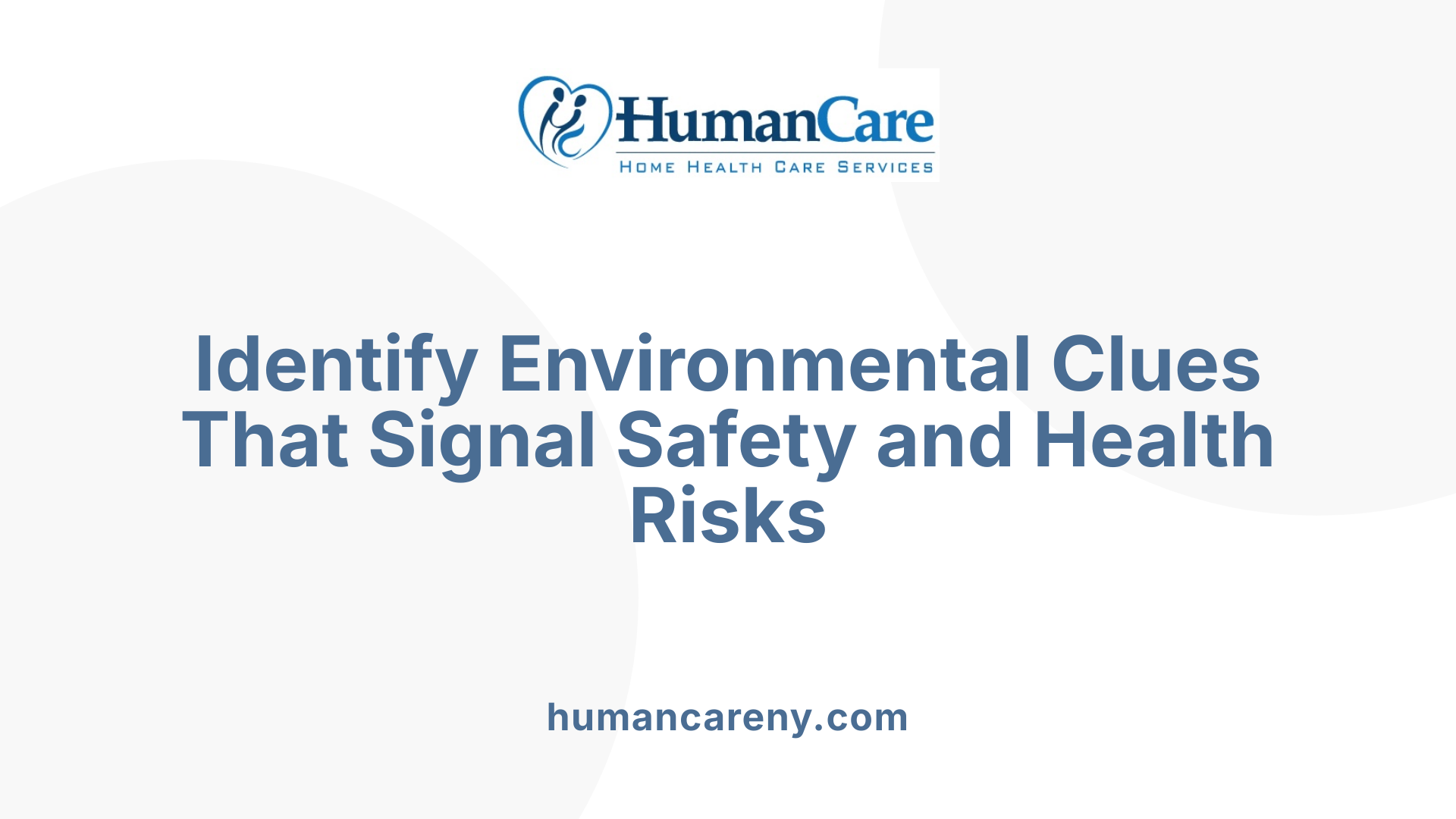
What are the early warning indicators of potential health or safety issues in elderly individuals?
Monitoring an elderly loved one involves paying close attention to both their physical health and the condition of their home environment. Early signs of possible health or safety concerns often manifest through changes in mood, such as increased depression, withdrawal from social activities, or heightened irritability.
Physically, signs like frailty, unsteady walking, or difficulty with mobility tasks—such as climbing stairs or standing—may point to underlying health issues. Additionally, environmental cues like cluttered living spaces, an accumulation of dirty dishes, or expired food in the fridge can suggest declining self-care abilities or memory problems.
Behavioral changes are equally significant. Forgetting to take medications, unpaid bills, bounced checks, or financial disarray can indicate cognitive decline or exploitation risks. Signs of neglect or potential abuse include unexplained bruises, burns, or binding marks, along with withdrawal or sudden mood shifts like anger or agitation.
Together, these indicators highlight the importance of early recognition to facilitate prompt intervention. Support may involve arranging home care services, engaging health professionals for assessment, or alerting authorities if abuse is suspected. Early detection not only helps ensure safety but also improves the chances of addressing health issues before they escalate, safeguarding the well-being of elderly individuals.
Financial and Personal Care Indicators
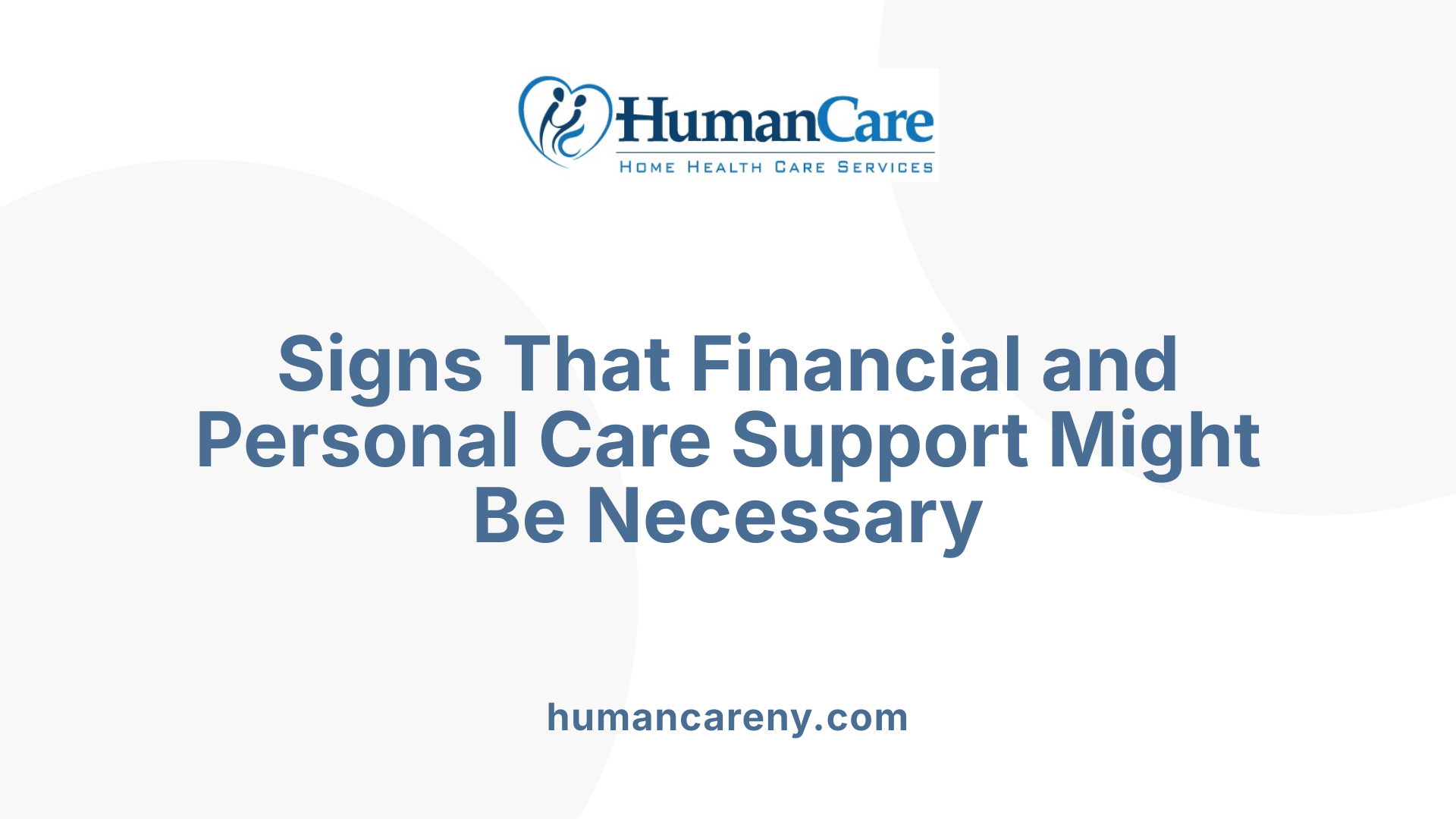
When should caregivers consider seeking professional in-home care services for an elderly loved one?
Recognizing the signs that indicate an elder needs extra support is crucial for ensuring their safety and well-being. When a senior begins to struggle with routine activities such as bathing, dressing, grooming, or preparing meals, it often shows that self-care has become overwhelming. These are strong signals that they may require assistance from professional caregivers.
Additionally, cognitive decline signs—including frequent forgetfulness, incorrect medication usage, or disorientation—highlight the importance of medical oversight and support. These issues not only pose health risks but can also compromise safety.
Physical limitations are also telltale signs. If an elderly person experiences frequent falls, difficulty walking, or shows unsafe behaviors like wandering or leaving appliances on, they need help to prevent accidents and enhance safety.
Emotional states like social withdrawal, feelings of loneliness, or depression should not be overlooked. These conditions can benefit from companionship services that encourage social interaction and mental engagement.
Furthermore, if family caregivers experience burnout or feel overwhelmed, seeking professional in-home care can provide relief and ensure continuous, attentive support.
Ultimately, consulting healthcare professionals or social workers can help determine suitable in-home services, tailoring assistance to the elder’s specific health and living circumstances. Early intervention can preserve independence and improve quality of life.
The Impact of Behavioral and Mood Changes
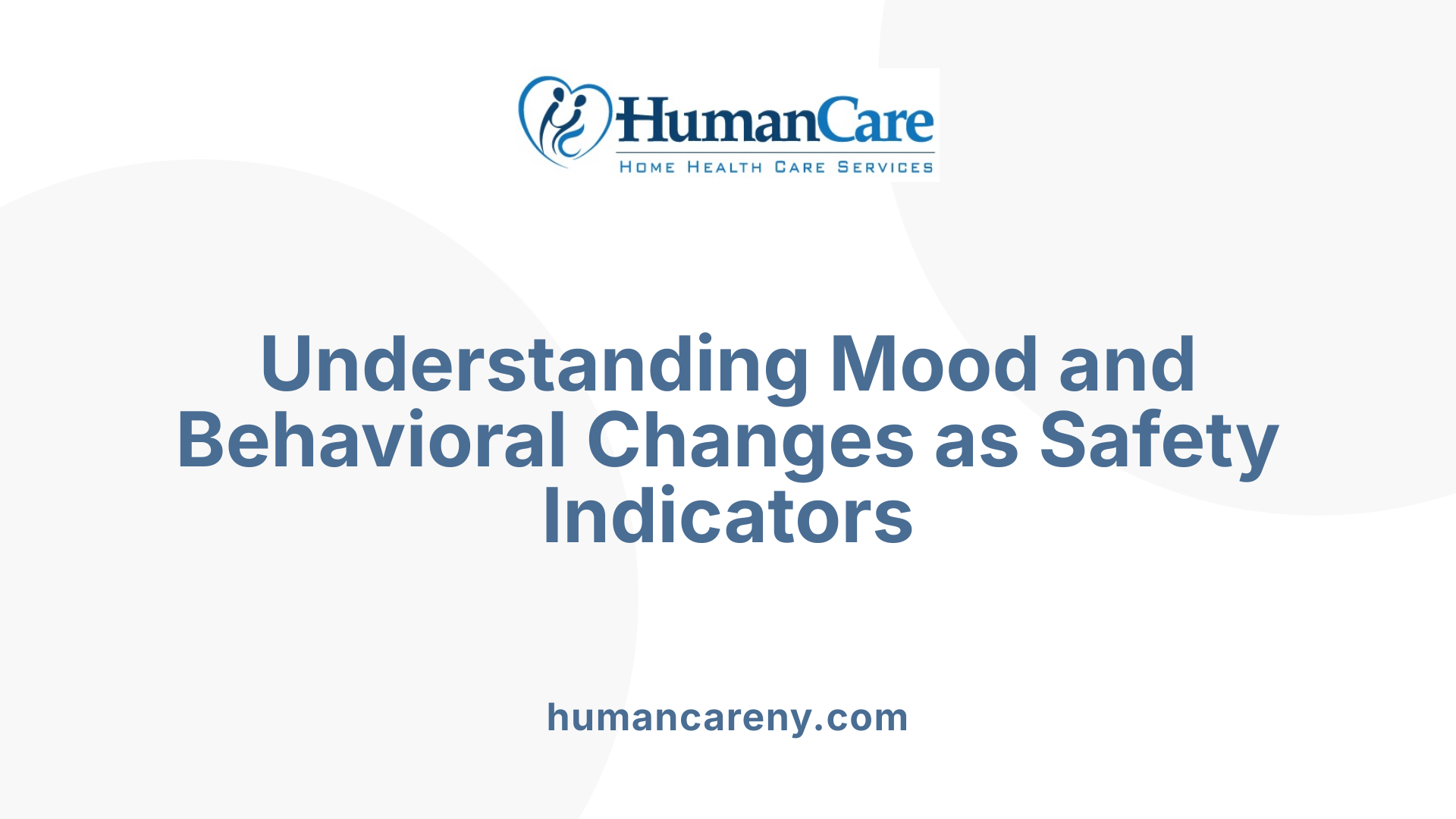
What early warning indicators of potential health or safety issues in elderly individuals?
Recognizing early signs of decline in elderly loved ones is crucial for their safety and well-being. Mood changes such as depression, irritability, or mood swings are often among the first indicators that something might be wrong. An elder withdrawing from family, friends, or social activities may be experiencing emotional or mental health problems.
Physical signs also play a significant role. Caregivers should watch for increased frailty, unsteady gait, or difficulty walking, which suggest declining physical health or risk of falls. Changes in personal appearance—like poor hygiene, weight loss, or unkempt grooming—could reflect struggles with mobility or depression.
Environmental cues are equally telling. A home cluttered with unwashed dishes, expired food, or piled laundry might indicate that the individual is neglecting self-care or experiencing mental health issues. These signs often go hand in hand with forgetfulness or confusion, including missed appointments or unpaid bills.
Behavioral cues such as medication mismanagement, financial difficulties, or unexplained injuries—bruises or burns—can be signals of cognitive decline or elder abuse. Careful observation of such behaviors allows families and professionals to intervene early.
In summary, early warning signs encompass mood and behavioral shifts, physical health deterioration, household neglect, and potential signs of abuse. Recognizing these cues promptly can lead to timely support and protection, whether through home health services, medical evaluation, or social intervention. Reporting suspicions to authorities is vital to safeguarding elders from harm.
More research and guidance can be found by searching the term "behavioral mood signs elder health" to stay informed and proactive in elder care.
Significance of Fall Prevention and Mobility Support
What specific signs should prompt consideration of in-home support or alternative care options?
When evaluating whether an elderly loved one needs additional help, several physical and behavioral indicators should be watched closely. Persistent mobility problems, such as difficulty walking, unsteady gait, or shuffling steps, are clear signs that safety is compromised. The occurrence of frequent falls—more than once or twice in a short period—is particularly alarming and warrants immediate assessment.
Difficulties with everyday activities like dressing, cooking, or maintaining personal hygiene also signal declining physical or cognitive abilities requiring support services. Changes such as unintentional weight loss or poor nutrition, household clutter or uncleanliness, and neglected household chores can reflect diminishing independence and increased risk.
Cognitive issues like confusion, forgetfulness, or wandering are serious safety concerns, especially when combined with behavioral shifts like agitation, withdrawal, or sudden mood swings. These may indicate underlying mental health conditions such as dementia, necessitating supervision or specialized in-home care.
Emotional signs—such as depression, social withdrawal, or irritability—may further suggest the need for mental health support. Caregiver stress can also be a red flag; if family members find themselves overwhelmed or unable to ensure safety, external professional assistance can fill the gap.
Health complications, including frequent hospital visits or worsening chronic conditions, highlight the importance of ongoing medical oversight at home. Overall, recognizing these signs early can prevent accidents, improve health outcomes, and maintain quality of life.
| Signs and Symptoms | Indicators | Recommended Action |
|---|---|---|
| Falls | Increased or frequent falls | Seek mobility assessment, consider assistive devices or home modifications |
| Mobility issues | Unsteady gait, shuffling, trouble walking | Implement physical therapy, install grab bars, or mobility aids |
| Household neglect | Clutter, unclean living space | Provide home support or cleaning services |
| Cognitive decline | Forgetfulness, wandering, confusion | Consider supervision, medical evaluation, or dementia-specific care |
| Behavioral changes | Mood swings, withdrawal, agitation | Engage mental health services or increased social support |
| Physical health signs | Weight loss, poor hygiene, household disarray | Medical check-up and support from home care providers |
Understanding these warning signs encourages proactive measures that can protect seniors from preventable injuries and support their independence in a safe environment.
In-Home Care Services and Support Options
What are the key signs your elderly loved one needs in-home care?
Recognizing when an elderly loved one requires in-home assistance is crucial for ensuring their safety and maintaining their quality of life. Several signs can indicate that professional help might be needed.
Physical signs are among the most noticeable. Unexplained weight loss, sudden or frequent bruises, cuts, or burns may point to neglect or accidental injuries. Signs of physical frailty, such as difficulty walking, unsteady gait, or needing prolonged periods of sitting and experiencing pain when standing, suggest mobility issues that require attention.
Behavioral changes often signal underlying health or mental health concerns. Withdrawal from social activities, increased irritability, depression, or mood swings can be signs that your loved one is struggling emotionally. If you notice increased forgetfulness, confusion, or difficulty managing medications and appointments, these could be early signs of cognitive decline such as dementia.
Environmental clues also provide insight. A cluttered or dirty house, spoiled food, overflowing trash, and unpaid bills or bounced checks might be signs of decreasing ability to manage household tasks. Unpaid bills and overdue notices can further indicate financial trouble or forgetfulness.
Safety-related signs include difficulty with personal care activities such as bathing, dressing, grooming, or oral hygiene, which are often overlooked but essential indicators. If an elderly individual is skipping meals, losing interest in cooking, or showing weight fluctuations, they may need support with nutrition and meal preparation.
In addition, a decline in overall ability to perform daily routines—including managing household chores, driving safely, or maintaining personal hygiene—are strong prompts for considering in-home care services.
Mobility concerns, increased falls, or difficulty navigating stairs may necessitate modifications in the home or assistive devices, which in turn require support from caregivers. Similarly, signs of neglect, like dirty clothing, body odor, or poor grooming, often indicate physical or mental health decline.
In cases where there are signs of abuse, such as unexplained bruises or burns, or behavioral symptoms like hiding things or paranoia, immediate reporting and intervention are essential.
Lastly, medical issues such as recent hospitalizations, managing multiple chronic conditions, or reliance on assistive devices suggest ongoing medical support needs within the home.
Monitoring these signs closely helps families and caregivers identify when professional in-home services are necessary. These services can include household chores, personal Care assistance like bathing and grooming, medication management, medical monitoring, and therapeutic interventions. Addressing these needs early enhances safety, health, and overall well-being.
| Signs You Need In-Home Support | Specific Indicators | Additional Notes |
|---|---|---|
| Physical decline | Weight changes, frailty, injuries | Mobility issues require support |
| Behavioral shifts | Withdrawal, depression, mood swings | Cognitive decline can be subtle |
| Environmental signs | Clutter, expired food, unpaid bills | Neglect or financial abuse |
| Personal care difficulties | Poor hygiene, skipping meals | Needs help with daily routines |
| Safety concerns | Falls, trouble walking or climbing stairs | Home modifications or aids needed |
| Medical management issues | Missed doses, confusion | Risk of health deterioration |
| Emotional and social signals | Isolation, agitation | May need social or mental health support |
Recognizing these signs and acting early can help ensure your loved one receives the appropriate level of care, supporting their independence while safeguarding their health and safety.
Proactive Steps for Ensuring Safety and Well-Being
Prompt recognition of the signs indicating your elderly loved one’s need for in-home care can significantly impact their safety, health, and quality of life. Regular assessments, open communication, and consulting healthcare professionals can help determine the right level of support. Early intervention through home care services not only addresses immediate safety concerns but also fosters independence and emotional well-being. Being attentive to both physical and behavioral changes ensures your loved ones receive the compassionate care they need to thrive in their own homes.
References
- Seven Signs Elderly Parents Need More Support at Home
- Recognizing the Signs: How to Help an Older Loved One at Home
- 10 Warning Signs Your Elderly Loved One Needs 24/7 Home Care
- 10 Signs Your Aging Parents Might Need Home Health Care
- In-Home Care: 10 Signs Your Loved One Needs Elder Support
- 10 Signs Your Elderly Parent Needs Help - A Place for Mom
- 10 Everyday Signs Your Loved One May Need Home Care in the ...



